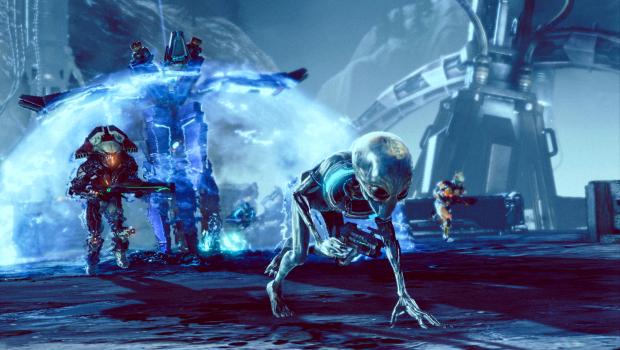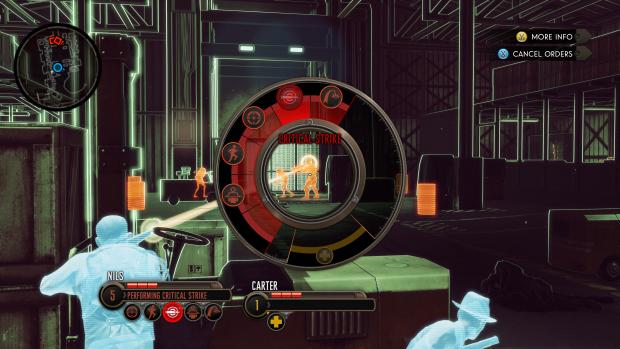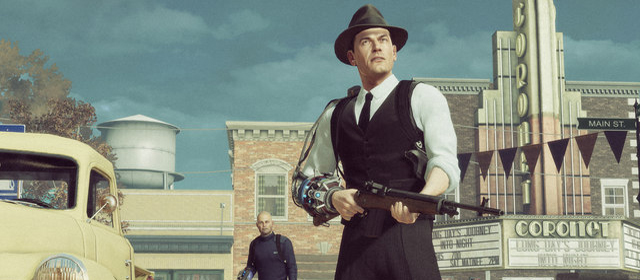Let’s cut to the chase here, because The Bureau has been coming a while now, and I bet that, like me, you are more than a little bit interested to find out just what the hell this game is.
Thankfully, it seems that XCOM: Enemy Unknown has been transported into a third-person tactical shooter, set in the 50s, with a gorgeous aesthetic and a lot of the tactical skill requirements that you know and love.
Sure, that’s reductive, I know – but the truth is, that’s how the game feels, which is a good thing. There are moments where you don’t even need to fire a gun, because you’re still the commander, just a different kind of commander. An FBI agent pulled into all the drama of an alien invasion, but rather than dealing with the events of what have happened, for a change we get to experience them right in the moment – it’s happening now.

But let’s back up a little, as our story begins with William Carter, tasked with protecting and delivering a briefcase that contains an unknown artefact. Suddenly, without warning, there’s a knock at the door and a mysterious woman is involving herself in Carter’s business. A scuffle ensues, in which Carter is killed – or so it seems. The glowing briefcase is obviously of alien origins, and something has happened to Carter, because he’s now alive again and has overpowered his attacker. The briefcase is gone, but Carter is not, and it’s then that all hell breaks loose.
Meeting up with a colleague as he attempts to escape alive (again), Carter quickly pulls out his weapon and starts defending himself against the onslaught of alien scum. Just like in Enemy Unknown, “units” (it still feels harsh calling them that, especially after you grow so attached to your carefully cultivated team) can be upgraded individually and have particular skills; classes, if you will. Unit 1 can be instructed to lay down a turret, while unit 2 can be told to target a specific enemy – it works extremely well from the radial menu accessed by a quick tap of the “B” button. From this menu you can command your squad as you see fit, but you don’t have to. After all, The Bureau is a shooter, so you can kit yourself out with a few weapons and go Rambo on the alien scum, if that’s your bag.

It’s worth mentioning that this isn’t turn-based, like Enemy Unknown is. Sure, bringing up the tactical options menu whilst locked into cover slows time down significantly, but it doesn’t stop it. Whether or not this may become an issue as the game progresses, is something we’ll have to find out when we play the final version – but, so far, the only rush you feel is the one caused by simply being in the moment. You see, as aliens shoot you from all angles, and as you ensure the safety of your squad whilst battling the odds, well… that’s bloody tense; mistakes will be made, lives will be lost, and it will all be your fault – again.
And this seems like as good a time as any to mention perma-death, because it’s back, and is still as brutal as ever. Naming your agents, levelling them, nurturing their growth – all of that carries over from Enemy Unknown, further adding to the “XCOM but a shooter” feeling.

It’s incredibly refreshing to be seeing events actually play out as you experience them, instead of being told about them, and there are plenty of surprises, such as the inclusion of a conversation wheel (think Mass Effect, though not quite as in-depth) that allows you to explore more of the narrative through a simple question and answer protocol. If you want, you can just jump to the obvious option that advances the story, but being able to find out more detail about a world that seems really interesting is a definite boon, and it helps hugely that the visuals are so interesting to look at. Playing on the Xbox 360, the visuals are gorgeous, and as the fluorescent, garish alien colours assault your eyes, it’s hard not to get carried away, feeling like the human race depends on you.
So it’s XCOM, but not quite as we know it. It’s hard to know exactly what has changed and when the decisions were made, but what we’re left with is a shooter that has decent mechanics, yet doesn’t always require the player to actually shoot anything. The tactical elements are deep and rewarding, and while transposing strategy elements into a third-person shooter could be a risky move, on the basis of what we’ve seen thus far, it’s a very smart one.
[nggallery id=1578]






